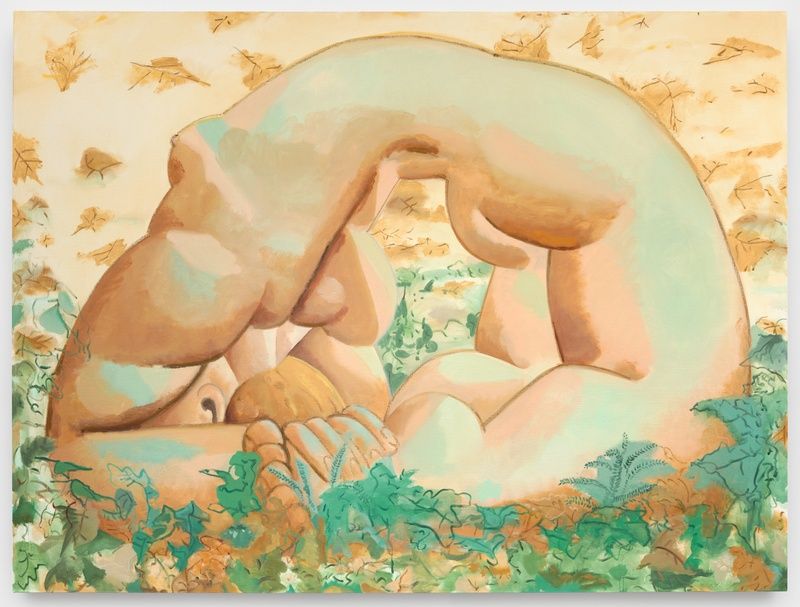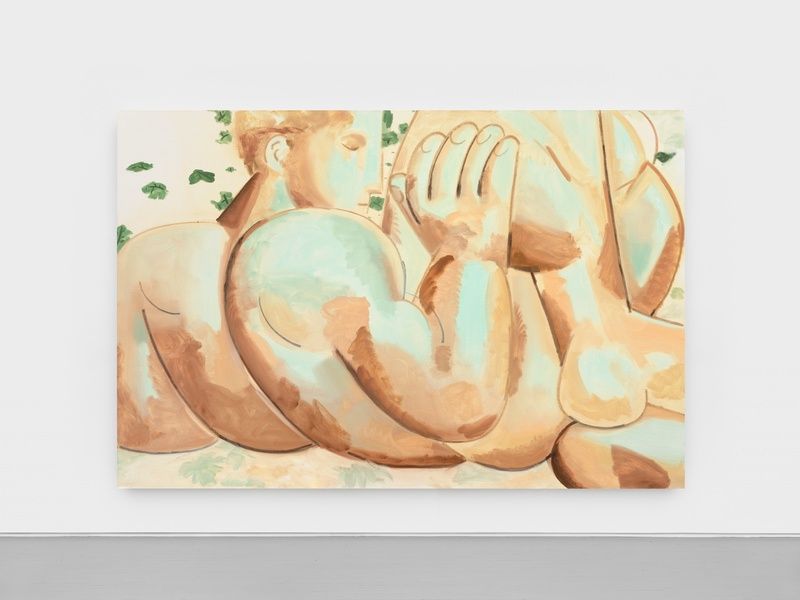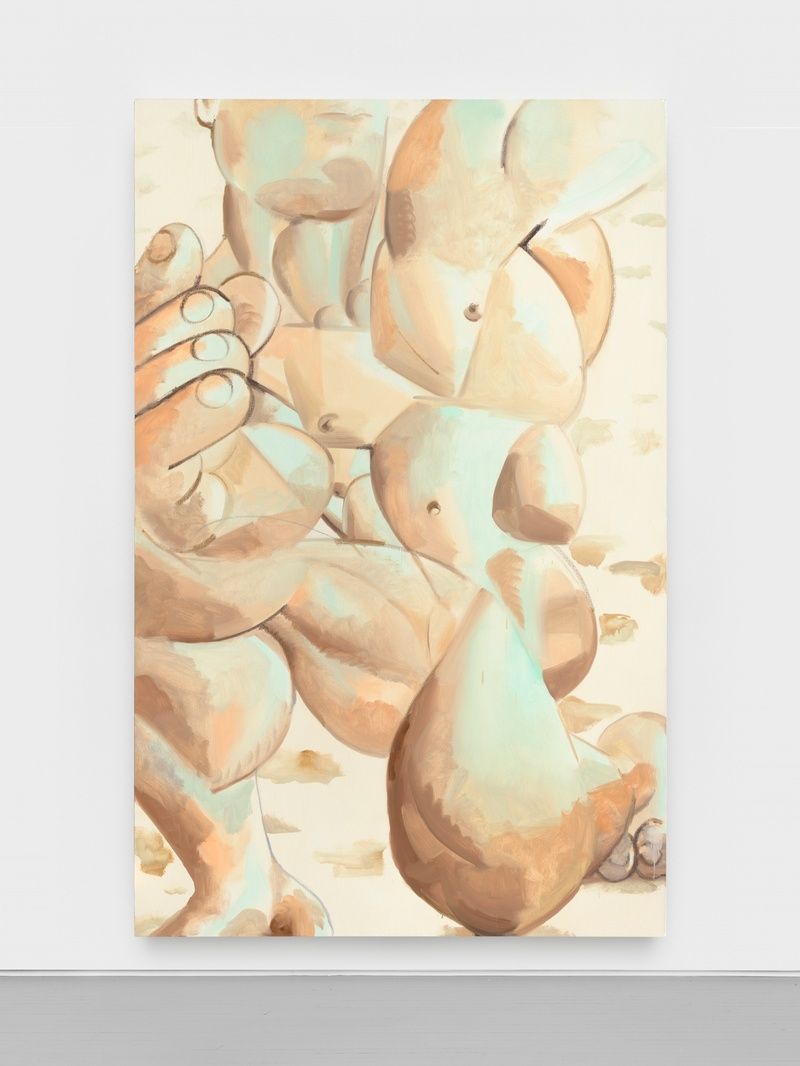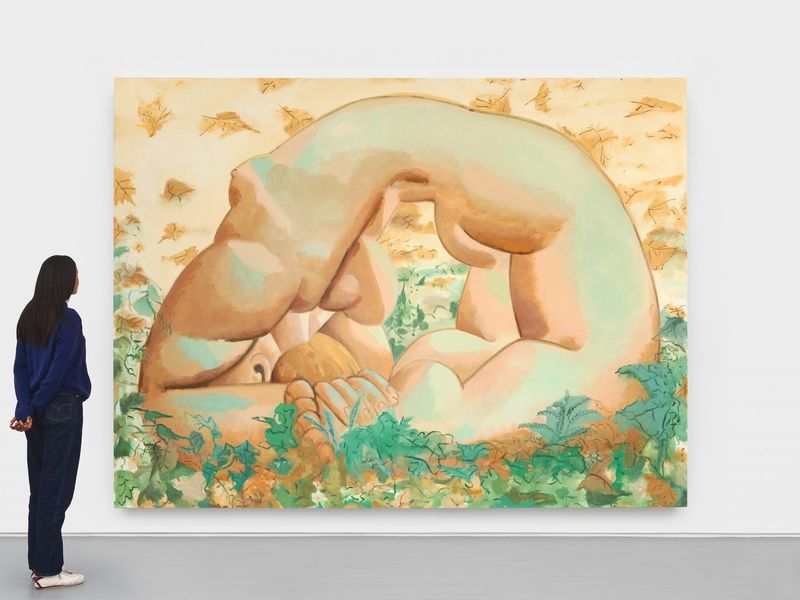James Fuentes Gallery
Juan Eduardo Gómez
Dusky Rainy Sunny
James Fuentes is very pleased to present Dusky Rainy Sunny, a solo exhibition of new paintings by New York artist Juan Eduardo Gómez.
In both style and perspective, the five large-scale works on view carry within them the great breadth of human expression in paint—recalling landscapes, cave paintings, graffiti, muralism, and figure studies—at large scale. Yet Gómez’s relation to history does not form the conceptual structure of his work. Rather, his aim is one of immediacy and direct interaction—between the image and its subconscious origins, and between the subject and the frame it inhabits.
Each of these works began as a charcoal drawing, made at the same large scale as the painting that would follow. Produced through a stream of consciousness, Gómez set out to render a landscape or garden—but the human figure repeatedly appeared, overwhelming the container of its compositional frame, however large. At this point, the figure becomes one and the same with the landscape. Thus the central idea of this series emerges: where expression isn’t verbal but rather visual, where spoken language isn’t shared and human connection isn’t necessarily formed by personal interaction, the residuum of human visual expression becomes the interface for our own. This is the body as landscape, and vice versa. As Werner Herzog describes in Cave of Forgotten Dreams, the painting we encounter carries “memories of long forgotten dreams” and remains both familiar yet removed, “like the frozen flash of a moment in time.”
Gómez’s early training as an artist was highly academic, informed by the technical rigors of painting figures from life during his time at the Art Students League following his arrival to New York City. In these same city surroundings he observed the graffiti of peers like Lee Quiñones, Futura, and CRASH in public space. During this time, his encounter with the work of Cy Twombly during the artist’s retrospective at the Museum of Modern Art marked a turning point, where he observed that a great deal of expression could lie solely in the applied pressure of a line. Gómez would also begin working in the studio of painter Alex Katz in the early 2000s. Each of these experiences offered a transformed means of making sense of the world through painting.
Beyond the literal, Gómez’s earlier work stretched a proverbial tightrope between expression and precision in as few strokes as possible, oftentimes nearing abstraction. Today, he finds a renewed freedom in letting go once again. While the works' large-scale presence and arms-length application reflect many of his original influences, these images resolve ever more organically, as if found in the same instance as their lines were rendered. And so, as Gómez’s figures stretch and fold into bodies of land, they feel somehow observational of something we’ve never seen before.
Juan Eduardo Gómez would like to thank Alex Katz, Ada Katz, Vincent Katz, and Vivien Bittencourt for their enduring support.
Juan Eduardo Gómez was born in Bogotá, Colombia and lives and works in New York City. His work has been exhibited at the Aldrich Contemporary Art Museum, High Museum of Art, American Academy of Arts and Letters, and Art in General, among other venues. His work has been written about in the New York Times, Art in America, TATE etc, and Zingmagazine. His work is represented in the permanent collections of the Museum of Fine Arts Boston, High Museum of Art, Dikeou Collection, San Antonio Museum of Art, Bowdoin College Museum of Art, Farnsworth Art Museum, and the Hispanic Society Of America.

Juan Eduardo Gomez
Figure and Landscape, 2024
Oil on linen
108 × 144 inches



